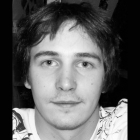You are here
Extraction of motor spatial patterns in children with movement disorders via joint decomposition of brain and muscle activity
In children with neuromotor disorders such as in cerebral palsy (CP), electroencephalography (EEG) based motor spatial patterns can provide valuable information for functional motor connectivity assessment. However, conducting cue-based EEG motor paradigms in people with CP has 3 main challenges: First, they can have difficulty initiating, maintaining and stopping a movement, which means movement is not time-locked to cue stimuli, which is essential for extracting invariant spatial patterns. Second, their EEG motor patterns maybe weaker than background noise, which requires many more trials than healthy subjects, which can be challenging especially for children. Third, the brain injury that leads to CP causes reorganization of the cortical control signals, leading to atypical motor spatial patterns that are not trivial to interpret. To overcome these challenges, we describe here a novel semi- supervised method that does not rely on cue based data epoching, but jointly decomposes the brain (EEG) and muscle (EMG) signals in the Riemannian space. It has the advantage of being objective, simpler and generalizable to signals of varying complexity, as compared to other recent methods such as SPoC and mSPoC that are quite complex and designed to handle a specific type of input signal. We demonstrate the method with the analysis of EEG and EMG data from 23 children with CP, to ascertain their reorganized functional motor connectivity. Subjects participated in an EMG-feedback based videogame experiment, where they controlled the lateral movement of a spaceship by pinching the index finger of either hand. In this way, the subject was engaged and focused and rewarded for being calm, while synchronized EEG and EMG was being acquired from hundreds of movement trials. The cue in this case was continuous rather than discrete. EEG and EMG covariance matrices were estimated and projected in their respective Riemannian tangent space and vectorized. Then a Canonical Partial Least Square was applied to find vector rotations in the tangent space to extract a latent variable that explains the maximum variation between EEG and EMG. Rotation coefficients were back-projected and diagonalized to produce a set of spatial patterns ranked by their importance. This method can enable the use of EEG based neurophysiological assessment of functional motor connectivity in people, especially children, with neuromotor disorders. A better understanding of brain physiology can help guide the development of more effective therapies. (Software implementation of this method is made available as an open-source python toolbox called pyRiemann).





